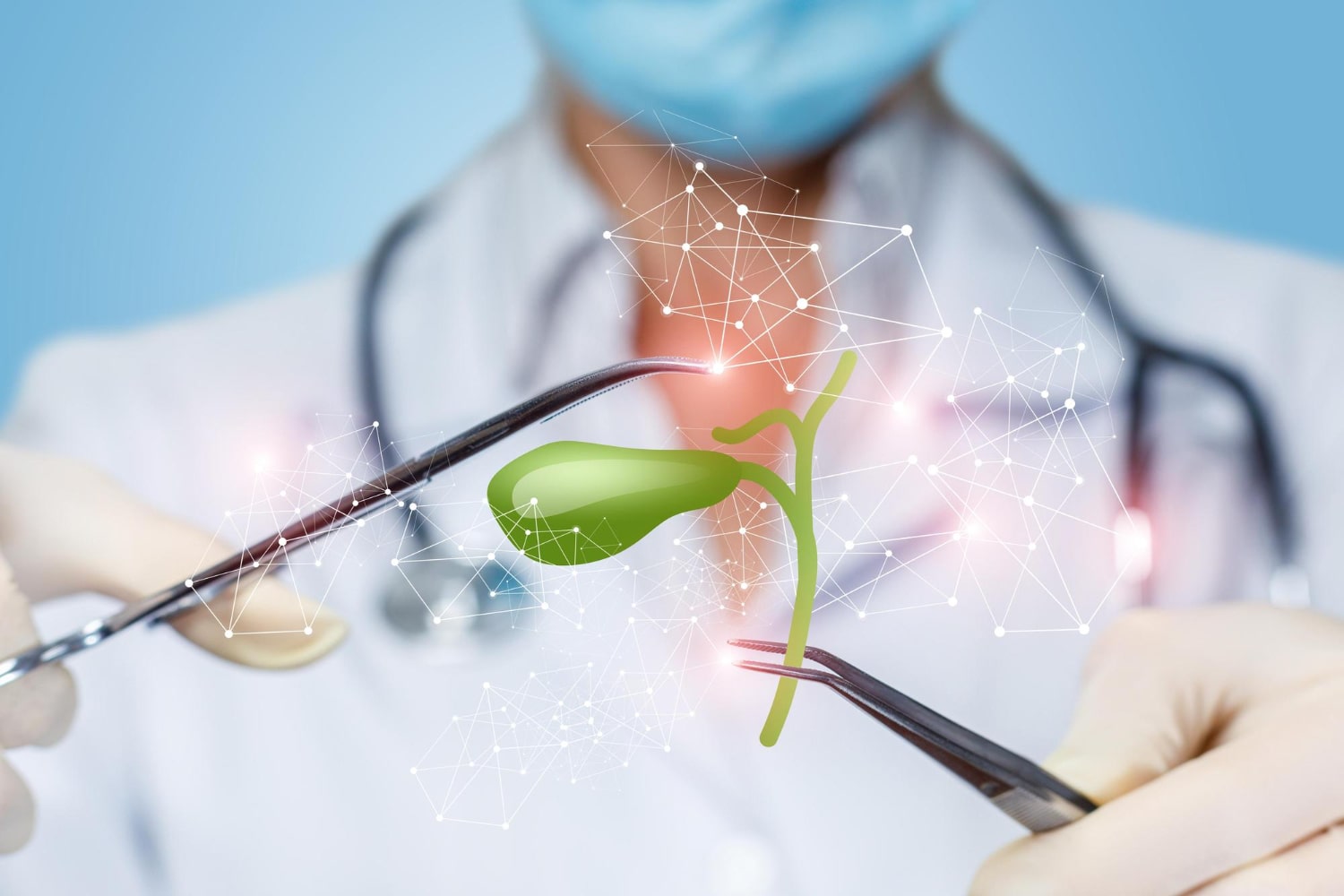The majority of gallstones are asymptomatic, meaning that they do not cause symptoms and are detected incidentally during examinations for other reasons. Symptoms will develop in 20%-30% of asymptomatic gallstones. Symptoms occur if the stone blocks the duct of the gallbladder. Abdominal pain, especially after meals called biliary colic, is observed. Surgery may not be necessary in patients without symptoms. However, in some patient groups, surgery should be recommended even if there are no symptoms. In the presence of hemolytic anemia such as sickle cell anemia, surgery is recommended as severe symptoms may develop. In cases where the gallbladder wall is calcified (porcelain gallbladder), in the presence of stones larger than 2.5 cm, in cases where the common duct between the gallbladder and pancreas is long, surgery is recommended as the risk of gallbladder cancer increases.
Non-Surgical Treatment of Gallstones
Treatment of gallstones with medication is usually unsuccessful and is rarely used. The risk of recurrence is very high with medication containing bile salts. ESWL, also known as stone crushing, has also been used, but its effect is limited, although it can be effective only in cases with a single stone. The safe and effective use of laparoscopic cholecystectomy (closed gallbladder surgery) has resulted in non-surgical treatments taking a back seat.
Chronic Gallbladder Inflammation (Chronic Cholecystitis)
Chronic cholecystitis (chronic gallbladder inflammation) occurs as a result of recurrent attacks of biliary colic caused by temporary obstruction of the gallbladder duct (cystic duct). The pain often occurs after fatty meals, is felt in the upper middle part of the abdomen and in the right upper quadrant and may radiate into the back. It usually lasts for several hours. If the pain lasts longer than 24 hours and is accompanied by fever, acute cholecystitis should be considered. Biliary colic pain may be accompanied by nausea, vomiting and bloating.
Patients with symptomatic gallstones are more vulnerable to stone-related complications. Therefore, surgery is recommended for patients with symptomatic gallstones.
The diagnosis of chronic cholecystitis is based on the patient's history, physical examination and ultrasonography. Ultrasound is extremely effective in diagnosing gallstones. Additional tests may be performed in patients with problems other than gallstones.
The treatment of symptomatic gallstone patients is removal of the gallbladder (cholecystectomy). Laparoscopic cholecystectomy (closed gallbladder surgery) is necessary because of the high risk of stone-related complications, especially in patients with significant and recurrent complaints. Laparoscopic cholecystectomy results in complete resolution of symptoms in more than 90% of patients.
Acute calculous cholecystitis (acute gallbladder inflammation)
Blockage of the gallbladder duct with stones will eventually lead to acute calculous cholecystitis (acute inflammation of the gallbladder with stones). Temporary obstruction of the gallbladder duct may not cause acute cholecystitis, but if the obstruction lasts longer, acute inflammation (cholecystitis) will develop. The bile that accumulates in the gallbladder becomes secondarily infected. If the obstruction persists, the gallbladder will develop a blood supply disorder (ischemia) and cell death (necrosis). Eventually, it may progress to a condition called gangrenous cholecystitis.
The patient may have signs and symptoms such as fever, abdominal pain (right upper quadrant pain), tenderness. In cases where the main bile duct is affected, mild jaundice and bilirubin elevation may be observed. Mild elevation in liver enzymes and elevated white blood cells suggest acute cholecystitis.
Ultrasonography is a sensitive and reliable tool in the diagnosis of acute cholecystitis. Ultrasound can evaluate the presence of stones, gallbladder wall thickness and the presence of fluid around the gallbladder. In most patients, the diagnosis can be made with history, physical examination, ultrasound and blood tests. In some cases, computed tomography can also be used, but ultrasonography is more sensitive in the diagnosis of acute calculous cholecystitis.
Treatment of acute cholecystitis
Since most patients with acute cholecystitis have an infection, appropriate antibiotic treatment is initiated. In the past, antibiotic treatment first and surgery 6 weeks later was the common approach. However, it is now accepted that surgery can be performed within the first week after the onset of symptoms. This is the safe and preferred approach. In patients who are not suitable for surgery, antibiotic treatment can be given first and surgery can be performed 6 weeks later. The patient should be informed about the advantages and disadvantages of this approach.
Surgery for gallbladder inflammation is laparoscopic cholecystectomy (closed gallbladder surgery). Open surgery is rarely necessary.



